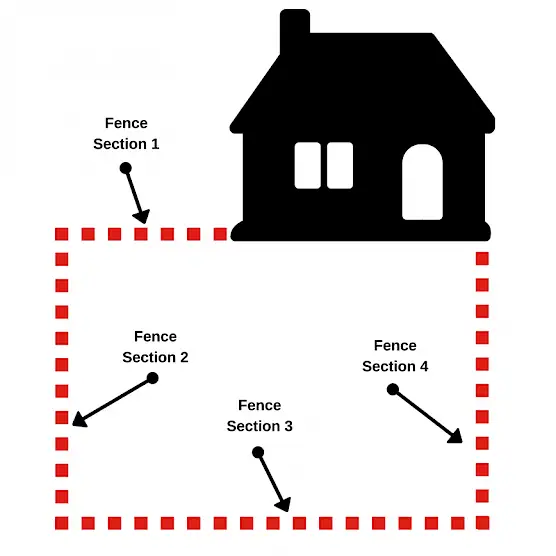
Fence Paint and Stain Calculator
Use this calculator to estimate the amount of paint or stain needed for your next fence project.
Calculator Instructions
Paint Coverage: Start by entering the paint coverage in square feet per gallon. This can vary significantly based on many factors such as spraying vs. brushing, surface porosity, paint type, and many other variables. In our experience, you can generally expect to get 350 square feet per gallon (or more) when rolling/brushing. However, when spraying, your paint coverage will be less. How much less is a tough question because it depends on the experience of the painter, the wind conditions, etc. On our last fence project, we sprayed and our actual coverage was right at 225 square feet per gallon. In our experience, you can anticipate somewhere in the range of 150 to 250 square feet per gallon when spraying. Be sure and check the manufacturers label on the paint as it often provides estimated paint coverage information, but this typically only applies to brushing/rolling.
Picket Width: Enter the width of the fence picket in inches. This will vary from fence-to-fence as there are many shapes and sizes. However, a common board size sold at hardware stores is the 6-in x 6-ft dog-ear picket. The actual width for this common board is 5.5-in. The default for this calculator has been set to 5.5-in but adjust this value as necessary to match your installation.
Gap Between Pickets: Enter the width of the gap between pickets in inches. If your fence boards are butted up next to each other and there is little or no substantial gap between them, then set this value to zero. Otherwise enter the spacing between pickets.
Enter Fence Sections: For each run of fence, enter the length and height of the fence section. For both the length and height, there are two input boxes: one for entering the measurement in feet and one for entering inches. As an example, if you measured a section of fence to be 20 feet 6 inches in length and 6 feet 2 inches in height, you would enter the length as "20" in the first length input box and "6" in the second length input box. Then you would enter the height as "6" in the first height input box and "2" in the second height input box.
You should enter the measurements for each section of fence on its own row. For example, if you have a fence that is made up of four sections, you would enter the length and height of each section on its own row for a total of four row (e.g. 4 sections). See Figure 1 for an example of a fence made up of four sections. Use the "Add Row" button to enter additional sections of fence. Once your fence information has been added, press the "Calculate" button to get the results.
Results: The calculator will generate the estimated amount of paint or stain needed for your fence. It provides four different estimates assuming four difference scenarios. The first estimate is for 1 coat of paint (or stain) on only 1 side of the fence. The second estimate is for 2 coats of paint/stain on only one side of the fence. The third estimate is for 1 coat of paint/stain on both sides of the fence. Finally, the last estimate is for 2 coats on both sides of the fence. We recommend adding an additional 5% - 10% to account for additional paint (or stain) needed for fence posts, to account for spillage, etc.

Figure 1: Fence Made up of Four Sections
This calculator is designed to provide you with a good, reasonable estimate for the amount of paint or stain you will need for your fence. However, it will not be perfect because there are so many variables involved. Figure 2 below shows you a typical fence type that should work well with this calculator.

Figure 2: Typical Fence
